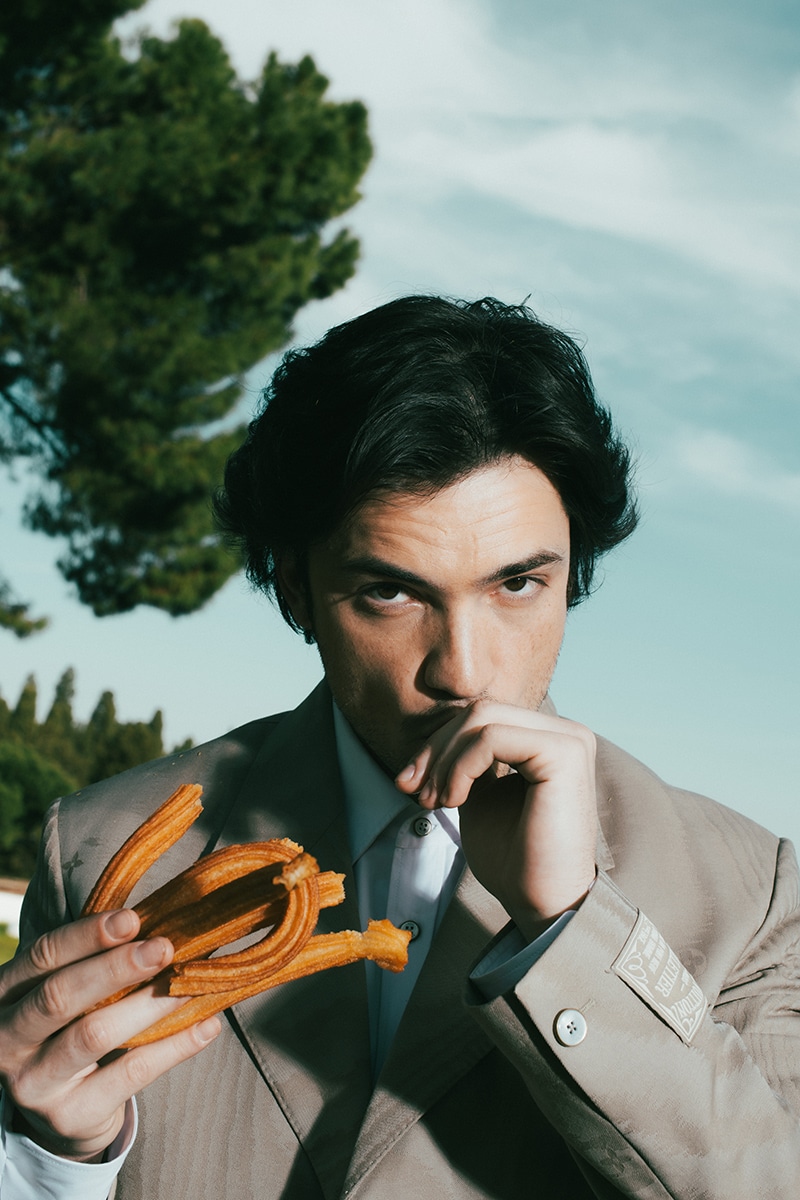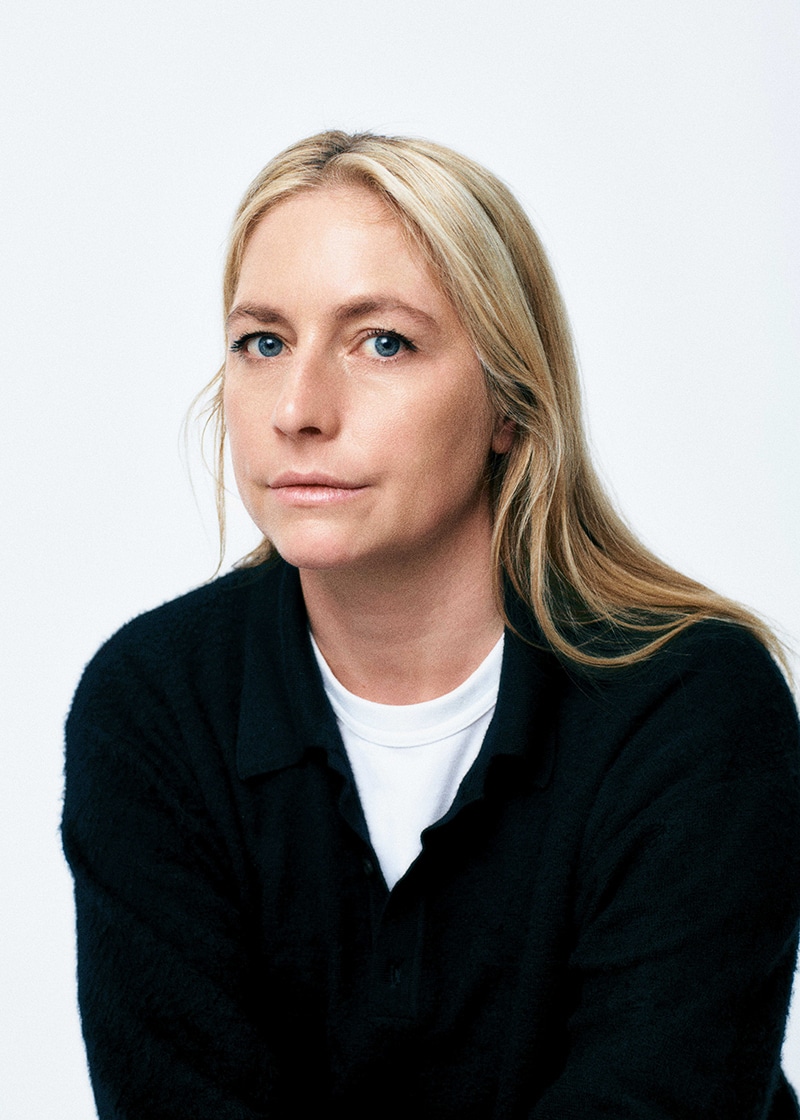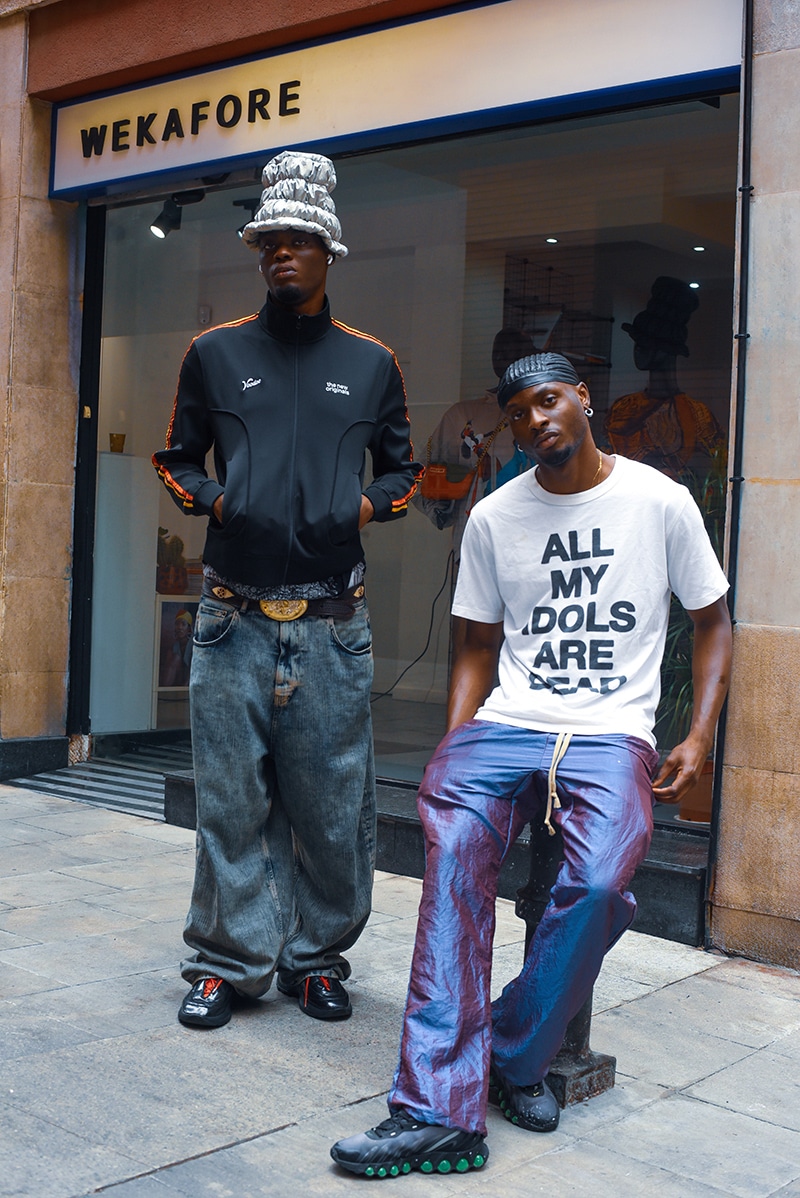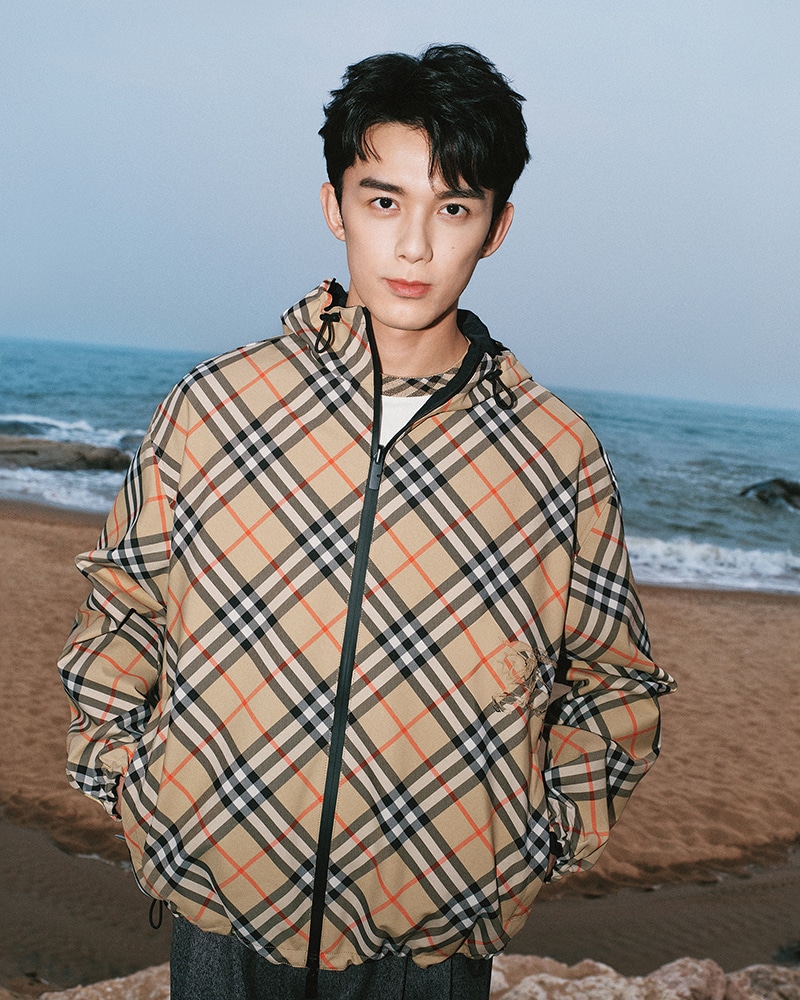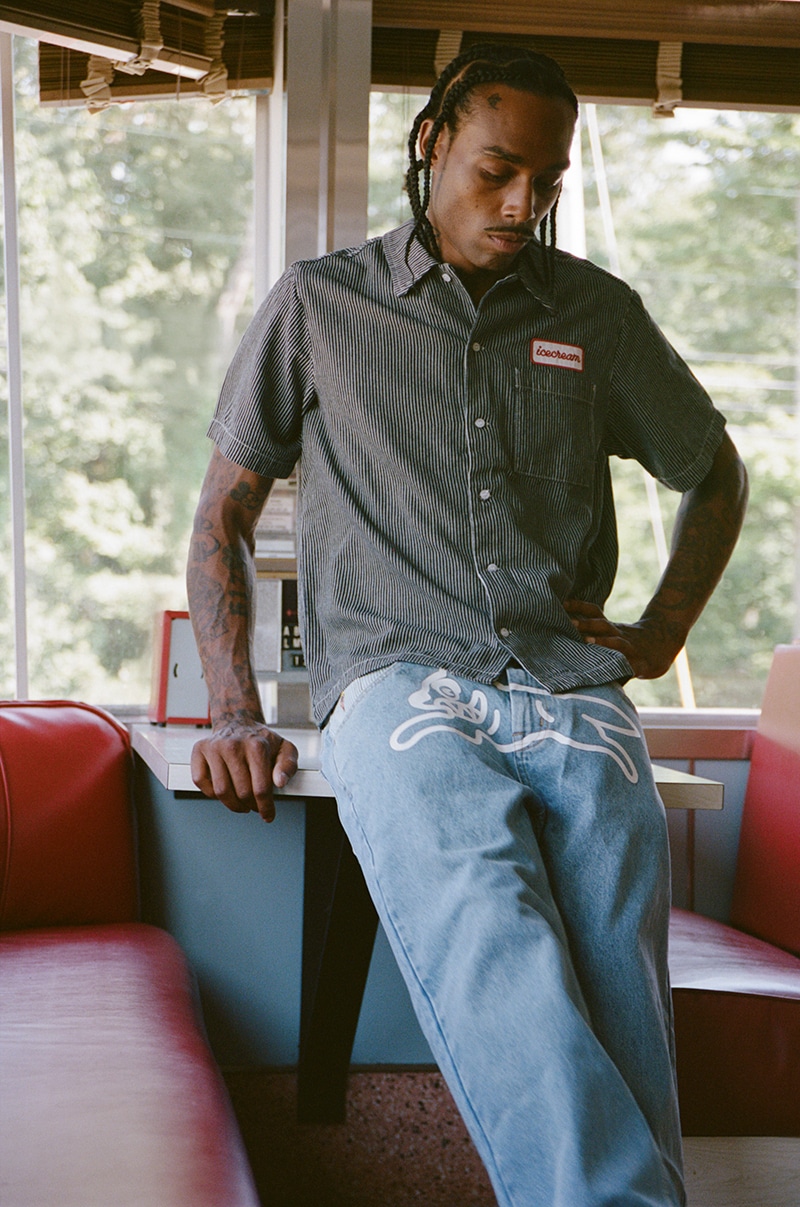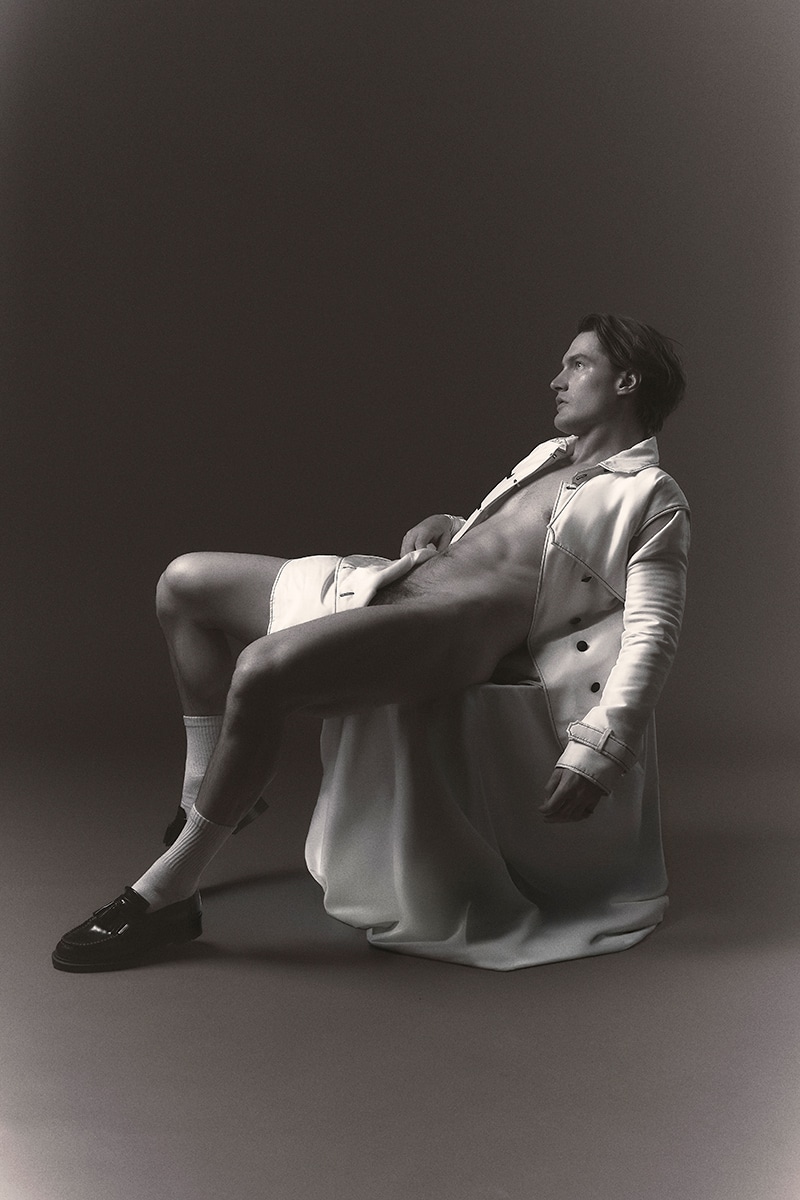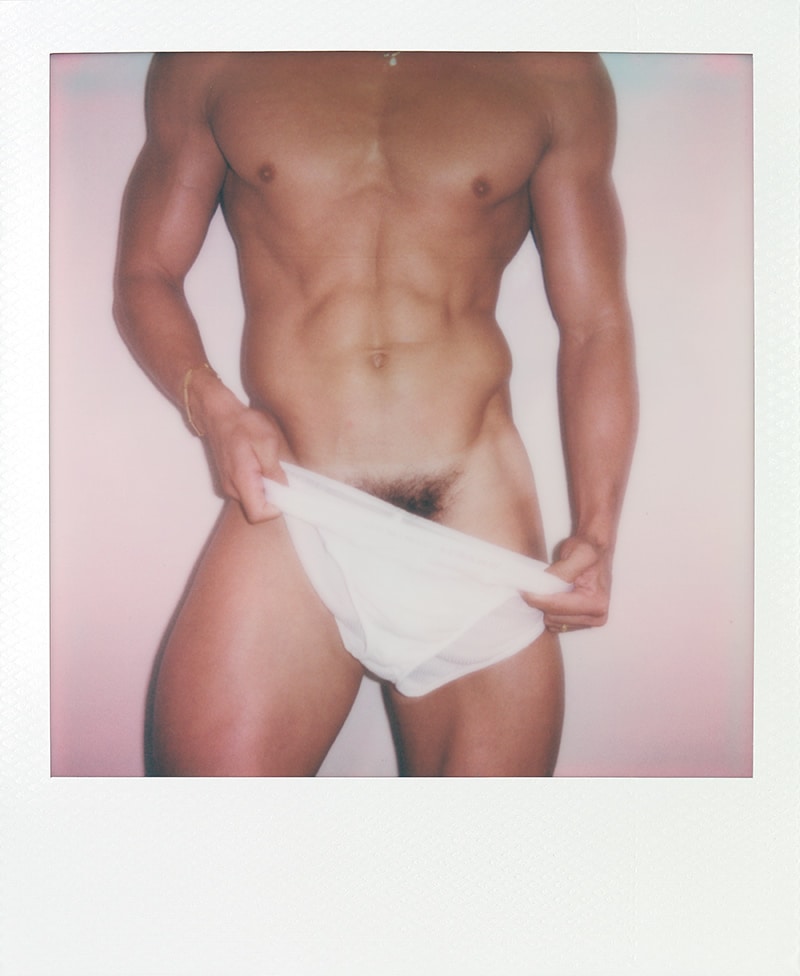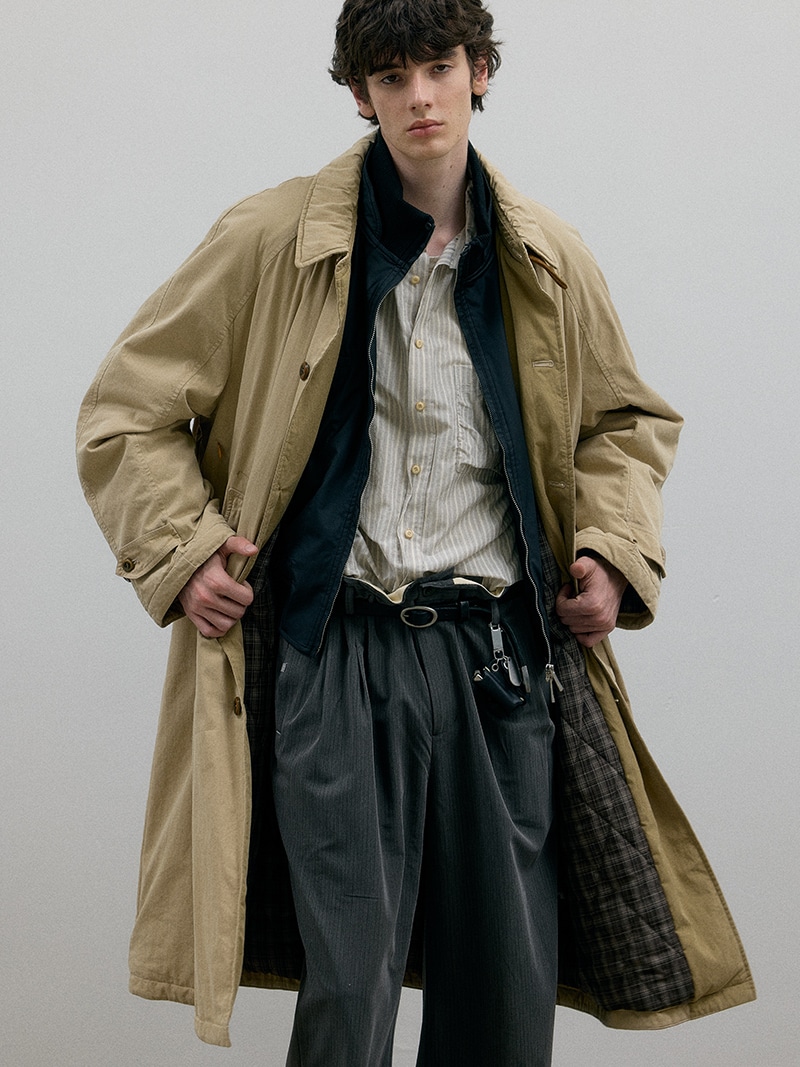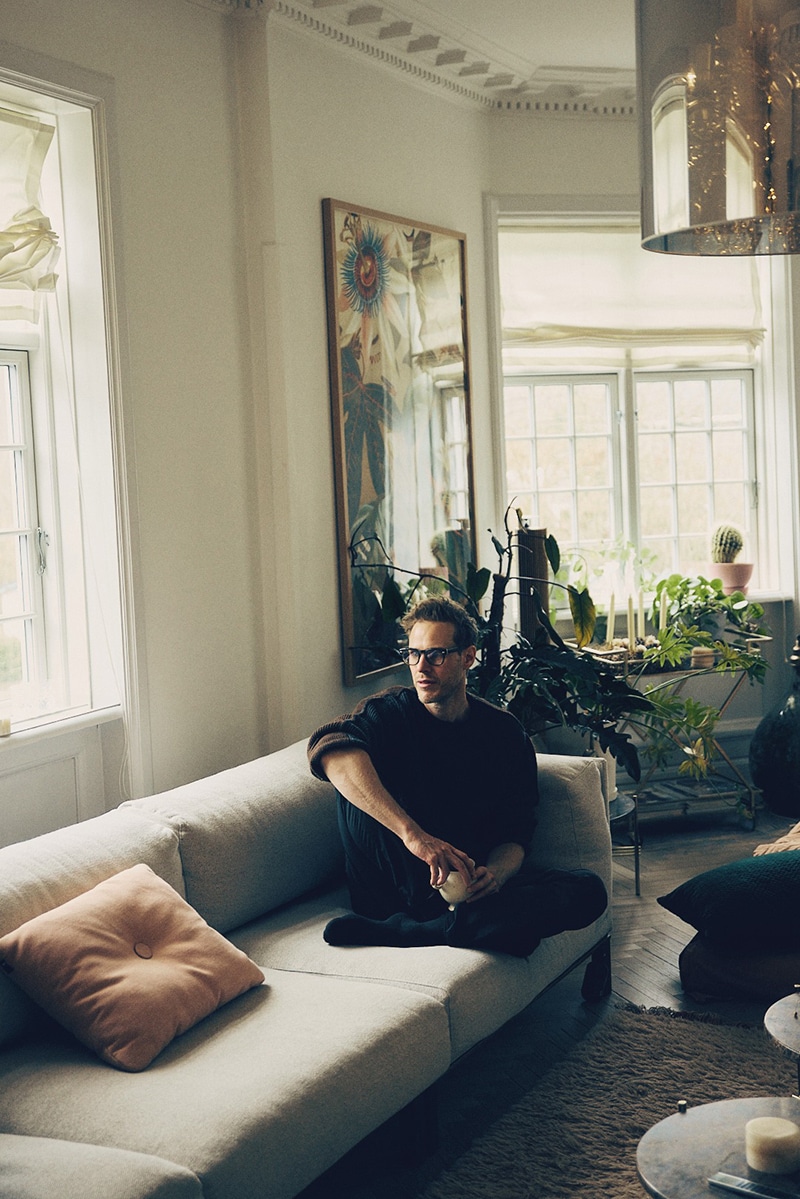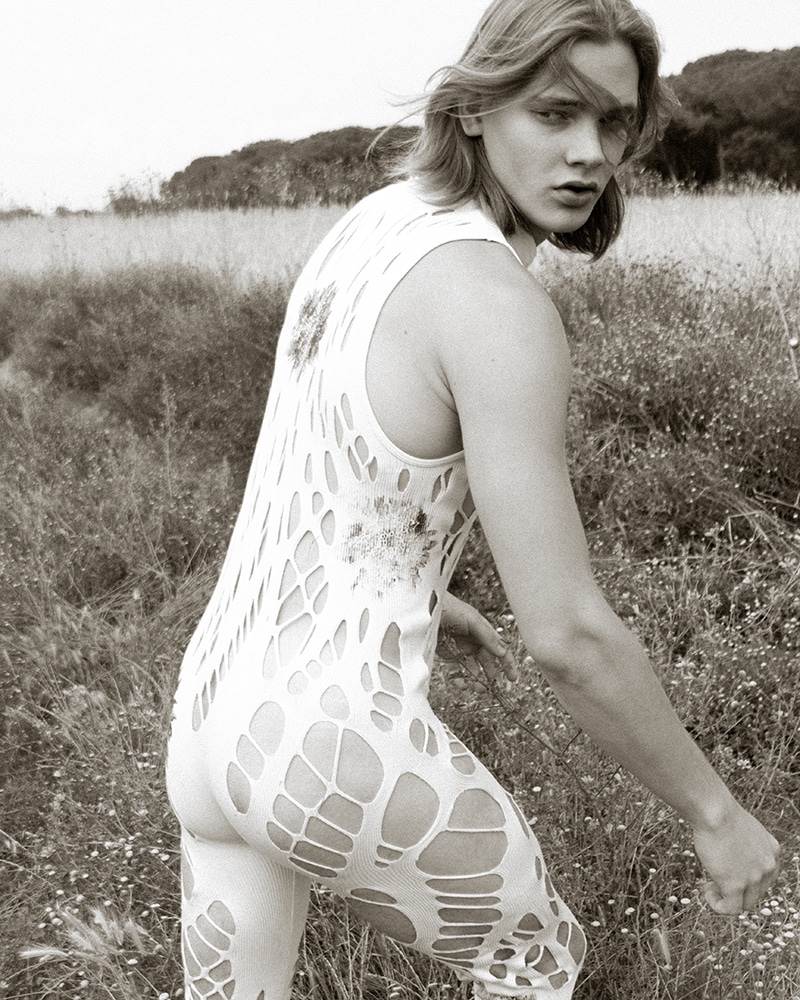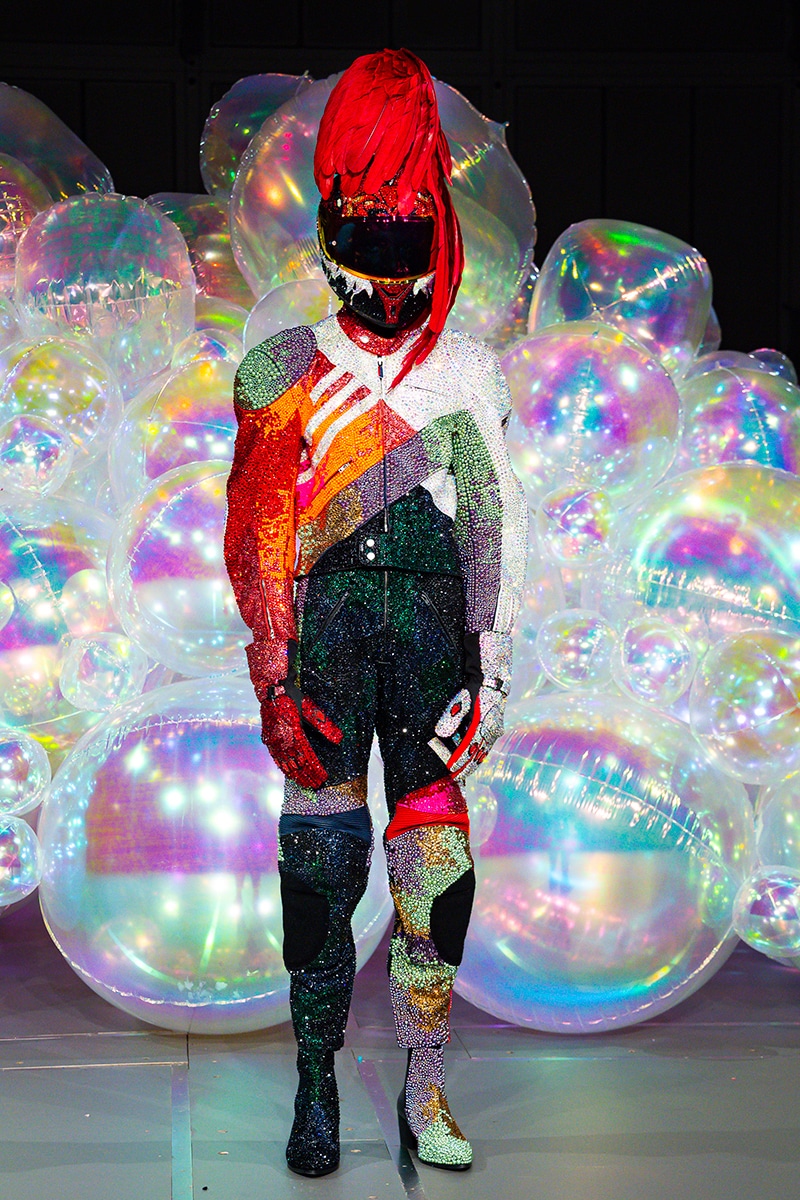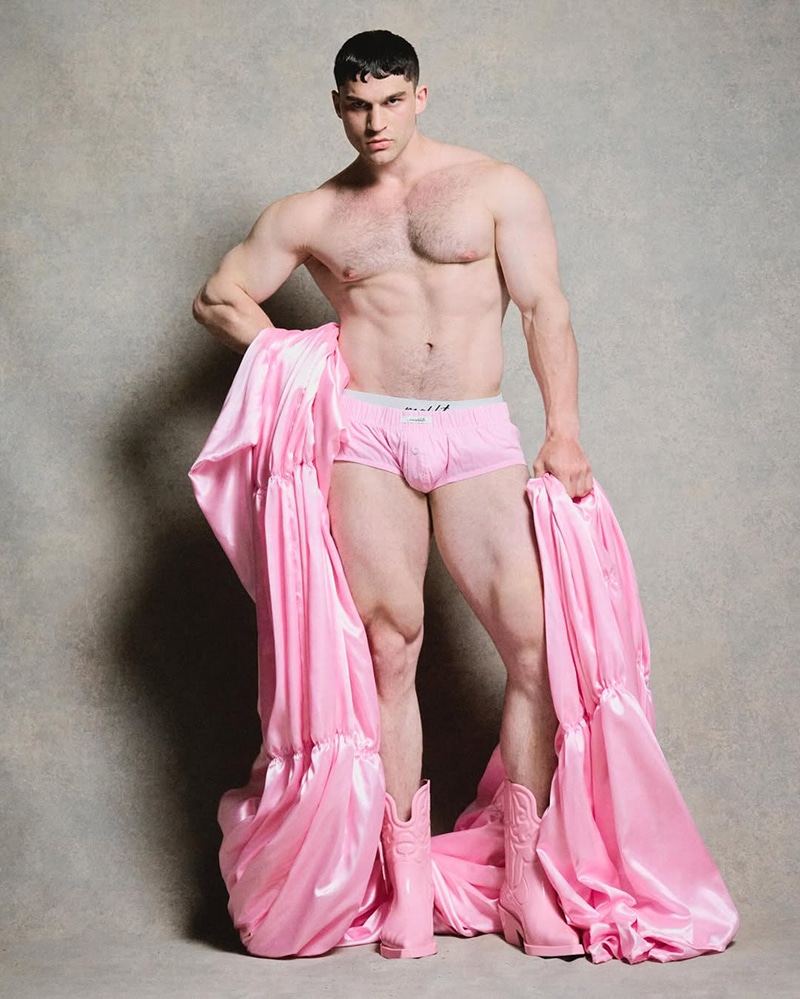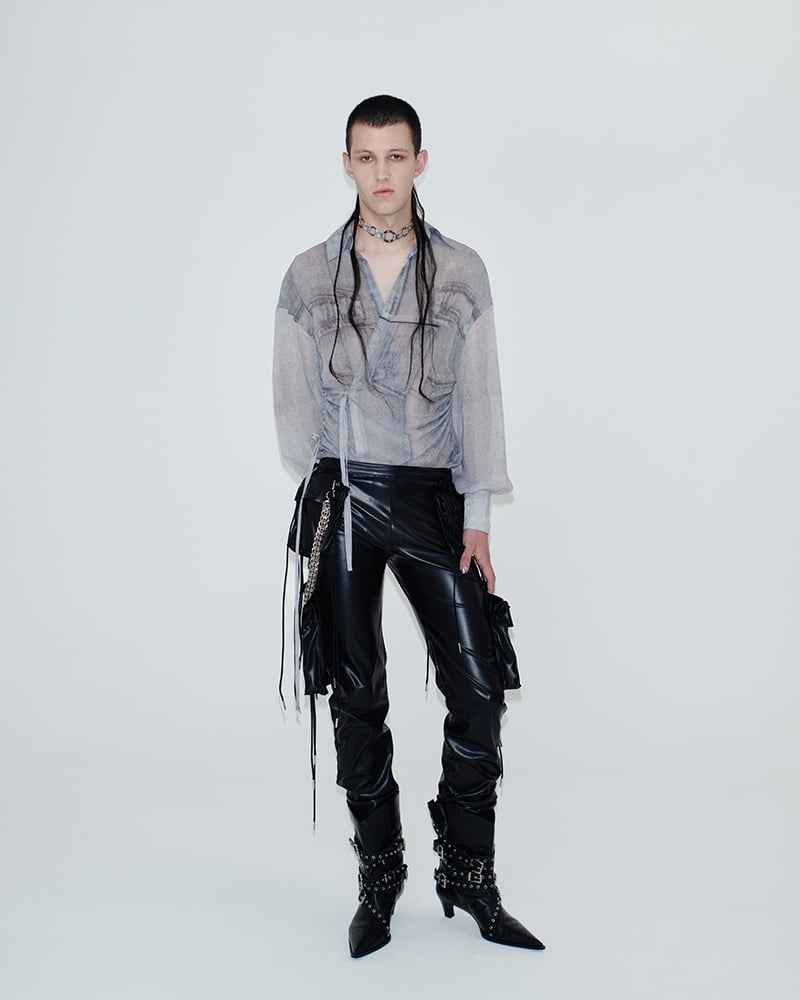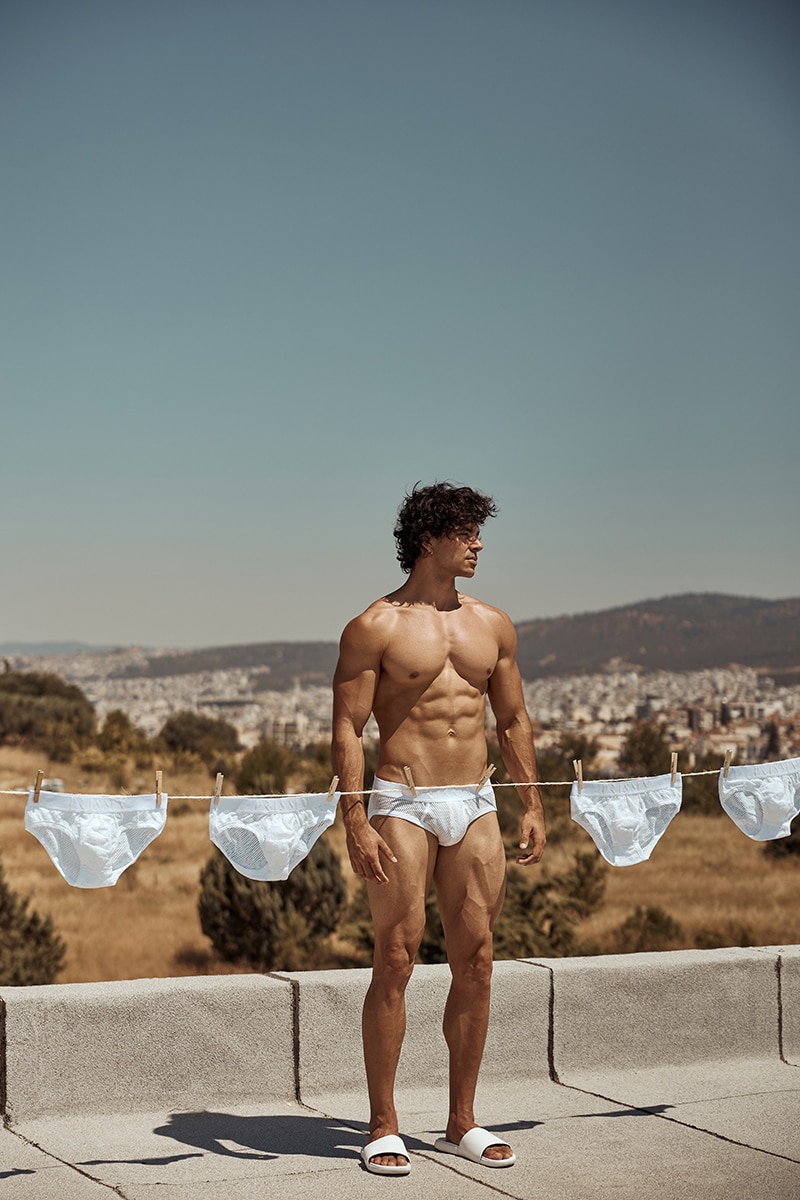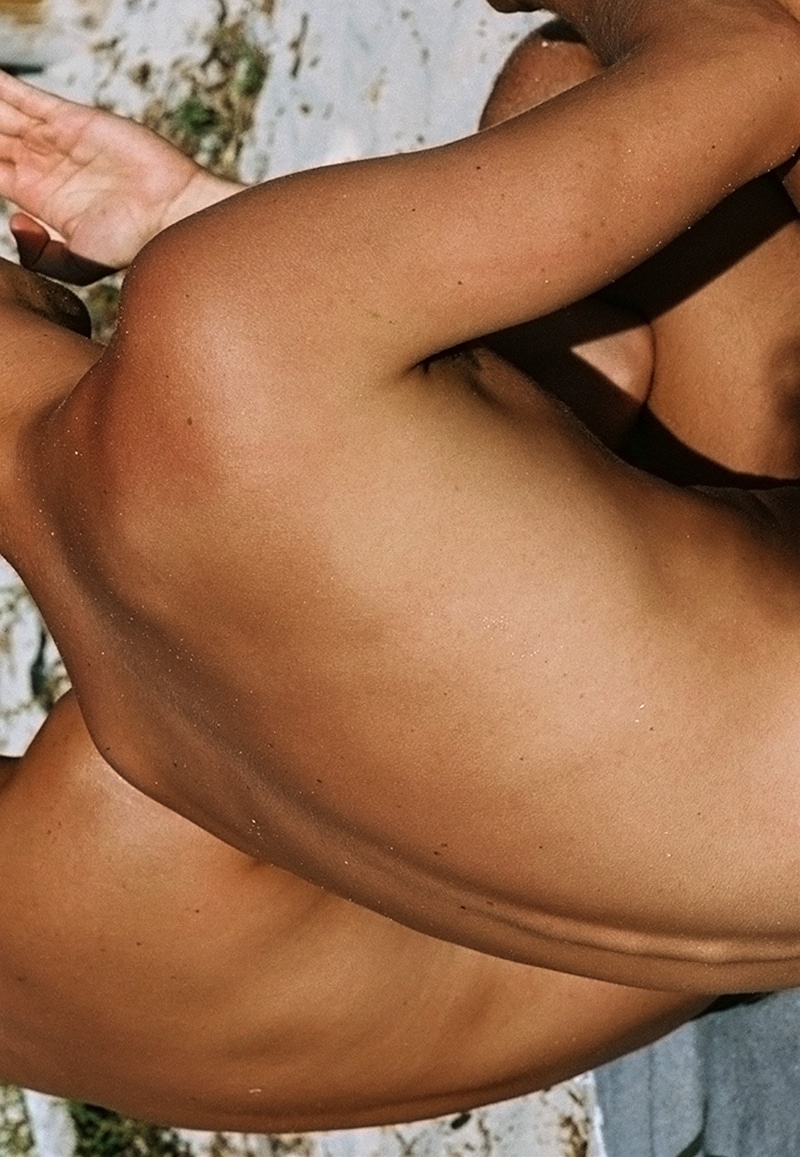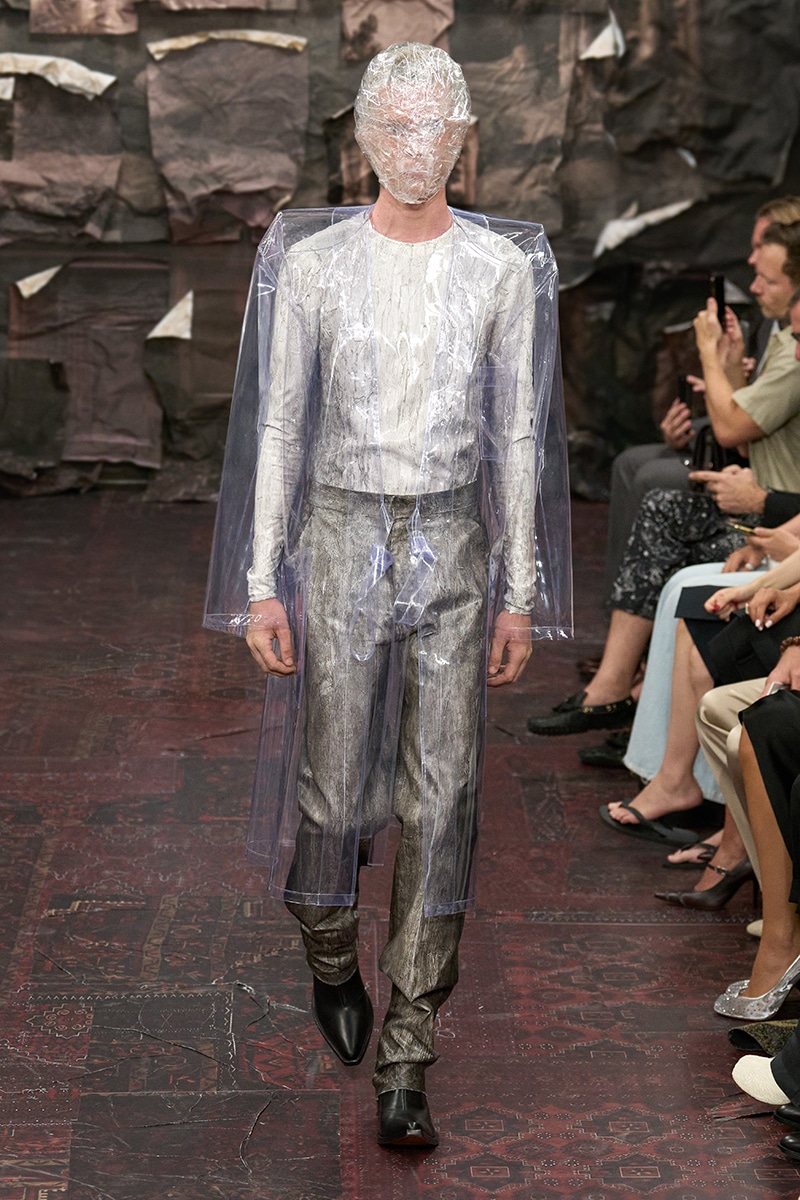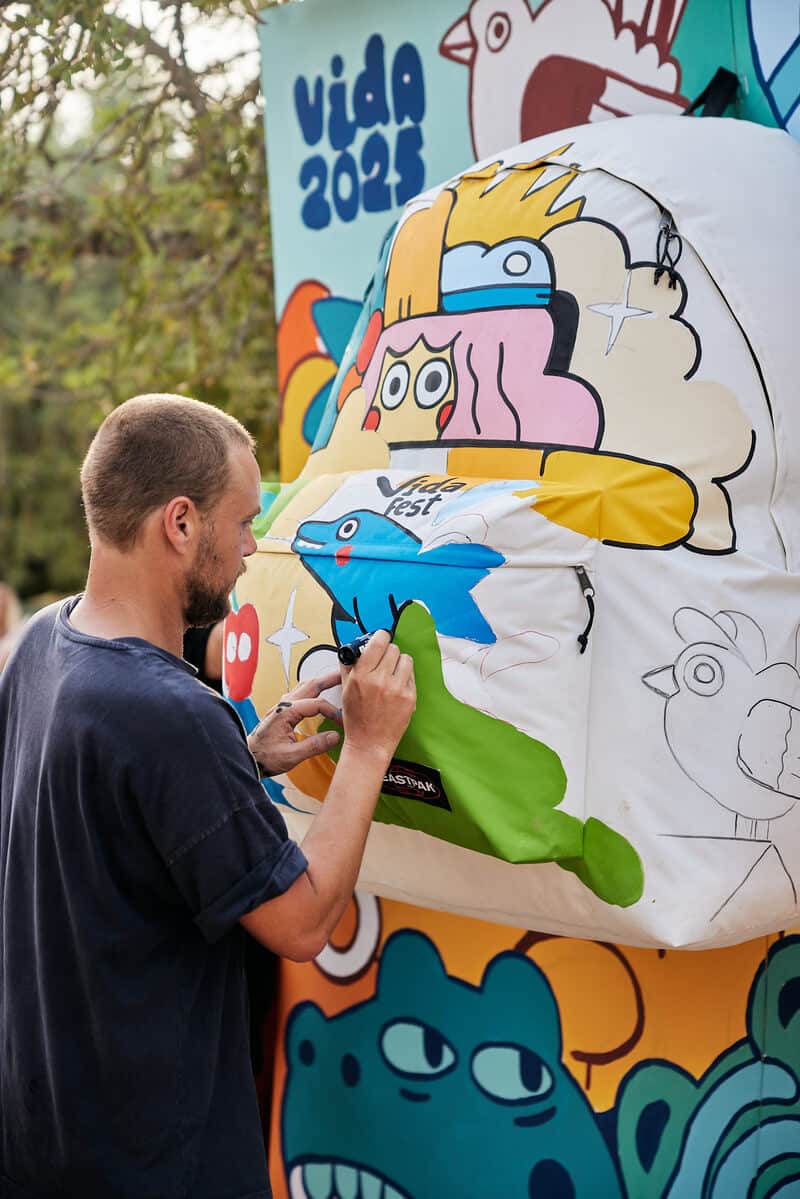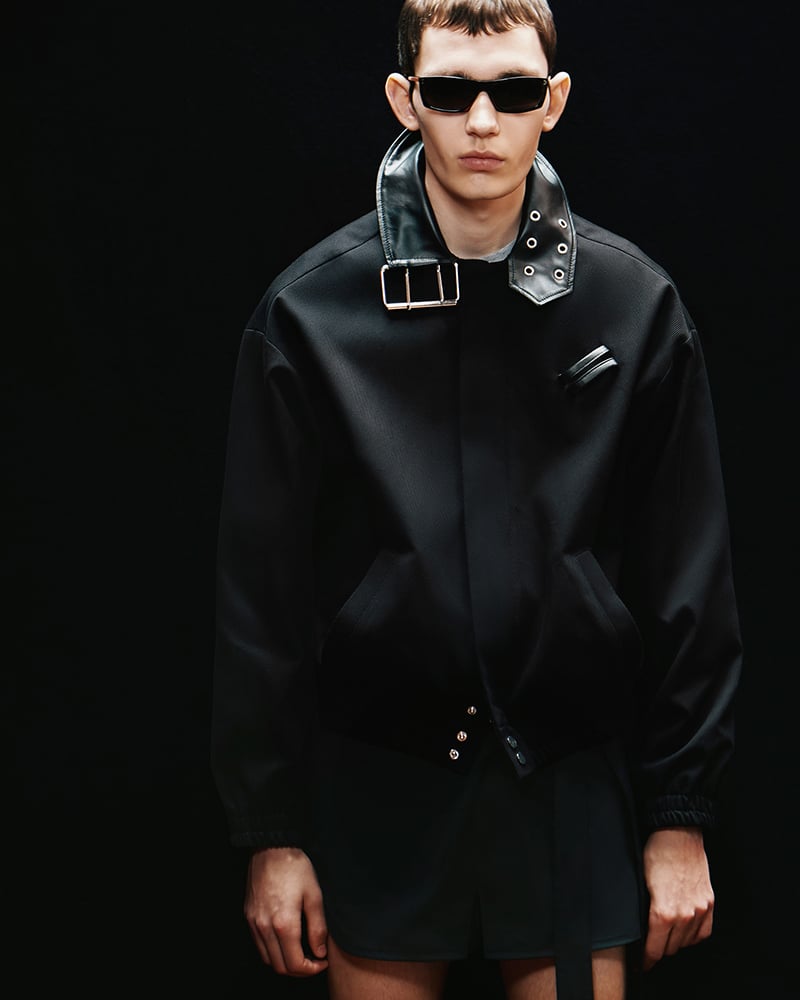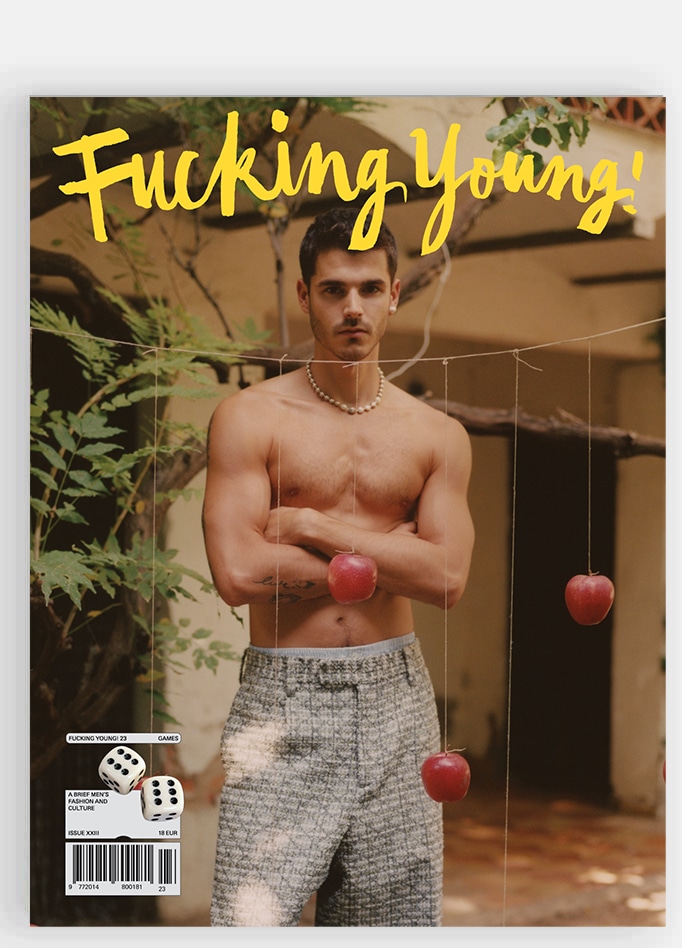
We get it. In this visually driven world, why stand still at the actual process of creation? Why care for under the radar wayfarers or root for the underdog? Well, because in true tailoring, far from dingy sweat-shops or perfectly lit Insta-hypebae’s and -beasts, there exist a real sub-culture. This is FUCKING YOUNG!. This is PUNK. It exists here and today. And before you hear us sobbing about a better future for the Supreme-lifting headstrong newbies….do not worry, we always keep things collected and legit in these pages.
This conversation, unfolding over this balmy summer, has, must and always shall be a work in progress. It will develop, mature, defy, stun, enrage and engage others. But fear not, dear friends. We know you have been looking for some substance. A rite of passage. Read on and discover an activist Geoffrey B. Small novel, flipping pages that write themselves. Here you meet a new generation of insanely talented tailors and creative thinkers. Geoffrey likes to call his a movement, one we are proud to sustain. Can you hear it calling?

Light up the skies, run on, never stop, fall down, get up and repeat. The time has come for SMALL. The thunder of a being.
#1 GEOFFREY.

CATCHERINTHERYE. Welcome, Geoffrey. Every story has a beginning, I want to start by returning to your ‘infancy’. To speak of early memories in your childhood, tangible process that began to shape, ideas, fears, and curiosities you had.
My first memories go back to the early 1960’s when my father was working in a science lab in France at the Pasteur Institute. My mother used to drag me to the Louvre often. I remember dark skies, black clouds, and those amazing green metal roofs on Paris buildings all darkened by age. I saw many paintings in those years. I remember immense works that covered entire walls in the Louvre. And ever since I can remember, I always drew pictures. The family did not have much in those days, my dad was working as a 2-year post-doctoral science student and my mom had left her job to follow dad to Paris and was taking care of me. I was four years old, and recall walking by toy store windows and seeing beautiful miniature toy soldiers all hand-painted and crafted. They are all gone now… those types of toy soldiers. They were amazing. Real craftwork. The pieces were maybe only 2 to 3 centimeters tall but the detail work would hit your eyes like a laser shot. Those uniforms were beautiful.
They would stop me, riveted- in front of the toy shop window, staring in at them. And my parents, knowing that I would want to have one of them, would yank my hand and pull me away from that window and those visions, and tell me “we were not going to buy anything that day.” I would hold on to those visions in my head, and when we would get home to the little apartment we were living in outside of Paris, I would immediately find a piece of paper and a pencil and start drawing those figures, and those uniforms, hats, everything as I saw them in my mind, like a photograph. I drew the fronts, backs, and side views–as realistically as possible–and then in a sense, I would have them in my hands and in front of my eyes.
I did that for the rest of my life… To draw an idea was to possess it, to realize it. Later in life, my interest in toys and perhaps uniforms changed into real clothes. And I continued the process to realize things right down to every single last detail and to try to make them “pop,” to hit my eyes like a laser- with their beauty and balance.

CEREAL. It is clear to me who this young yearning, propelled you onto the path as a tailor. Well, I am not one for looking back overtly, but our readers surely would like to hear about your initial thinking, when you began your design journey?
Perhaps you are right and it was those uniforms I saw when I was four years old- on 3-centimeter handmade toy soldiers or 30-meter paintings in the Louvre done by David, Gros or Delaroche… I spent my later childhood and teenage years growing up in the USA in New England and became enamored with American revolutionary war clothing and then baseball and football uniforms if you can believe it.
When I was around 16 years old, I went into a great store that is now gone named Louis Boston where a buyer named Murray Pearlstein was introducing a new wave of European designers coming from Milan and the beginnings of the ‘Made in Italy’ revolution in men’s fashion. The fabrications, cloth, and details were so beautiful and done in a way that I had never seen before. They were elegant, they were honest and they just made beautiful sense. This was clothing the way it should be. Like when you sit down and have great food cooked by someone who knows what they are doing. It is a culture. It is a way of knowing how to live and how to do things right. I vowed one day to be able to somehow become a part of that.
I had no idea where to start. I did not know how to sew anything. I did not know how to make a pattern. I had no family members in the business. Indeed, I came from a family of professors and physicians. But I began to read about where those clothes were coming from and who was creating them. And I began to draw them in my mind and on to paper voraciously, with no end in sight… but the hope that they might take me somewhere. After numerous tries to be hired and to work at Louis Boston and being rejected each time, I got a job selling jeans in a Gap retail store and just kept drawing more pictures. Eventually, I went to a night school for fashion design and my drawings won a series of big design competition prizes organized by the industry in New York.
That was the beginning of my design career. It quickly led me to learn over the next couple of years that in order to have control of your design (your art), you needed to learn about production (how to make things) and that was critical. Then I found out that in order to control your production, you needed to be able to pay for it, so you needed to learn about business. And then in order to really know about business, you needed to learn about the law. So I began a long, slow journey to train and prepare myself to build a way to do the art of making clothes with complete and total control. I knew we needed total control so our art would be different from all the others and protected and done right in every single aspect possible. This of course, was crazy for the rest of the fashion industry and the world around me in general, and many laughed at or ignored me along the way. Looking back I have absolutely no regrets for taking the path that I, and now all the incredible people working with me creating our ever more amazing clothes, have taken.

CEREBRAL. An important part of this poetic sartorial journey, also are the emotive deep immersive experiences you create during the off-the-beaten-track Paris presentations. Could you tell our readers your reasoning here?
If you believe that fashion and clothing is an art form, you need to prove it. Put your money where your mouth is, so to speak. Convincing people that it’s more than just knocking off others and being a celebrity DJ or a cheesy merchandiser working for the corporate luxury brand machines whose cultural knowledge and the taste is one step above a Burger King menu; is the sacred mission of our growing movement.
This world hangs by a thread right now.
Passing on the idea that there is a better and a right way of doing things to the next generation is what it’s all about. And at the heart of all that is the human heart, the emotions and the soul of human beings sharing this world and this life together… with all of its pathos, pain, sadness, passion, joy, and love, while they still can. For over 20 years our shows in Paris have taken chances, and even now still have been ignored or banned from the official fashion week calendars. Last fall, we did the first live theatre play in a Paris runway show in the history of Paris fashion with a mesmerizing rendition of Samuel Beckett’s “Come and Go.” And in this year’s “Get Ready “show for men, we did Shakespeare for the very first time also in the history of Paris fashion, and it was stunning.
There is no doubt that the medium of the art of fashion is far from established and set in either form or format. We find that very exciting and we are constantly striving to reinvent the art as we know it, and see it. It’s unfortunate but not surprising that the official fashion week people who are dominated by the multinational luxury groups continue to hesitate to recognize what we are achieving in the medium.
There was a time when Paris was based upon true creation over commercial interests. That’s what made it the capital of fashion. For the past two decades, however, corporate global interests have usurped it and fashion week is primarily a mouthpiece for them and their sycophants. We still believe, however, that it is the only place in the world for the most creative players to show their most advanced work.

CATALYST. Your work also can be seen as an assessment of contemporary societies, keeping in mind your pieces submitted to publications and a clear tone of voice, in terms of issues that span from politics, garment creation, and identity. In this conversation, I would like to ask you about how you personally believe in charting a course for a new movement, in terms of (new)consumption, (mental)ity, ‘democracy’ and attitude?
Well, in many ways we have given up on democracy. Democracy no longer exists in 95% percent of the world. It has been carefully and systematically eliminated and replaced by a new corporate ruling class which is global and in the process of a major geopolitical chess game that is gambling with the survival or extinction of the entire human race. Many of the heads of these corporations are failures still being propped up by corruption, lack of competition and monopoly–and are increasingly out-of-touch with reality. As the economist and social theorist Jeremy Rifkin says, they need to urgently change from a ‘geopolitical’ view of the world to a ‘single biosphere’ view of the world. A view that we are all in this together. Right now. They need to be woken up. They need competition. And fashion and clothing reach them all in one way or another.
Our view is: “if the world is going to be run by corporations, fine… let’s build our own.” Let’s build our own corporation with its own communication and education that serves our interests instead of just theirs. Let’s take it right to them and compete for their customers, one human being at a time. Let’s beat them on value, honesty, beauty, and class. Let’s beat them on efficiency, economy and basic benefits for the customer starting with doing something to stop the madness and keep us all alive, well and thriving, instead of terrorized, poisoned and on the verge of total systemic collapse. I’d spend my money on that, wouldn’t you?
CAPSIZE. If we are to brave ourselves to embrace a (brave) New World (and corporation), what course should we set for the decades ahead, also taking into consideration an entire generation that is perhaps relentlessly plugged into their non-native internet quick fixes?
Actually, the smart ones are pulling their plugs out. Both Bill Gates and Steve Jobs prevented their kids from getting hooked on smartphones as soon as they began to see where the technology was going. Lead developers for Facebook, Instagram, and other leading IT media are now getting off in droves too. What does that tell us? If you are paying attention, you know that being “plugged in” now is becoming a very dangerous and questionable thing. Like Artificial Intelligence and CRISPR technologies, no one out there has challenged the incredible riskiness of it all. No one is regulating it.
You may be being plugged into a one-way ticket to the gas chamber of the 21st century, or you may be being manipulated into becoming one of the people who run the chamber and pulls the switch on your other fellow human being. In the meantime, your every movement and action is being tracked, watched and logged forever by people or machines you don’t know anything about. And if you are really hooked, you cannot even cross a street, drive a car, or hold a conversation with another human being without having that screen in your face–leaving you already at risk of your own lifelessness either socially or physically.
So let us unplug and start talking to each other like human beings again. Let’s get rid of the screen telling us what’s “real” and what’s “fake.” If we don’t start talking to each other and working together, face-to-face, human to human, to make this world a better and much safer place than it has become now, before it’s too late.
CALLIGRAPH. Attack the block, we feel you here. To denounce, renounce, attack, accept, speak, listen, run, create and observe, we all need our filters, in terms of literature, art, music, film, emotion. It would be interesting to ask you for a framework in terms of creators, artists, players, novelists, that you carry with you…
For designers, except for Cristobal Balenciaga (the real one), the majority of my colleagues have left me somewhat disillusioned. I prefer filmmakers such as Kurosawa, Fellini, Tarkovsky, Bergman, Hitchcock, Coppola, Truffaut, Eisenstein and others whose combination of visual, audio, story and morality openly echo classic artistic genius and masterpieces of history (both eastern and western). And whether it is Zen, Tao, the Rinascimento, the scriptures, or Greek myth and tragedy, those works and what they have to say, have stood the test of time. For example, Kurosawa pointed out in an interview in 1993 with Japanese director Nagisa Oshima where he advised young directors to read books and build a repertoire of knowledge- “Creativity comes from memory… you cannot create from nothing.” The architect Mies Van der Rohe further stated: “first, copy the Masters, then do your own thing.” These themes ring true for all of us. To build on the culture, you must know it first.
Connected to this, our FW18 collection for men “Get Ready,” is about the transition of generations. We went to Shakespeare because few works in all of history describe the change of a generation and its challenges more profoundly than the story of King Lear. It was an immensely powerful presentation, with Brad Sisk and Graham Newmarch. Also, it was the first time in the history of Paris fashion that a live Shakespearian theatrical performance had been done in a Paris runway show…
In the folly, frivolity and commercial immensity of fashion, there is a huge audience now that no true artist can ignore if he or she wishes to inform, educate, inspire and remind the generation of his or her time about what things are and perhaps should be really all about.
All of us working together here hope we can provide another way of looking at things and doing things as the next generation comes into its own moment and destiny. We must not forget the value of human beings, and how important we are to each other’s well-being and survival on this planet, at this time.
+ PART 2 YOUNG TAILORS & COMMERCIAL RENEGADES
#1 LOÏS.

Loïs Dionisio is 24 years old and grew up near the Ardéche region in rural France. He studied film at the Université Paul Valéry in Montpellier and then fashion at the Université de la Mode – Lumiére in Lyon and earned a masters degree while interning with the Geoffrey B. Small (GBS) Sartoria in Italy in 2017. With GBS, he learned to sew and rapidly develop advanced tailoring skills.
AVALANCHE. Loïs, welcome, when speaking of contemporary culture, often younger generations indicate, that is has become more difficult to find real information, where do you turn to personally?
It may be more difficult to find out what is historically true nowadays, but I don’t think “real information” is a thing, and should be what we look for in design research. Everything is shown with a bias, in a certain way, to prove something or give it a better, or worse, image than what it really was. An image will show it’s subject under the prism of its author’s interests. The king’s painting may not respect the real colors he was wearing, the pose on a picture might highlight something to hide another, etc. The real interesting things are laying in the details, for example in old sociological pictures, like the work of August Sander, or the study of portraits from the beginning of the 20th century. The way a garment is worn fits, is altered, or held for the picture brings another dimension to the piece, a personal touch that offers a new taste to what could appear like a very classical garment. It’s this human side that drives my research.
Before studying fashion, I went to film school and was very interested in philosophy. The relationship between an individual and the way he presents himself to the world is fascinating, and this is this complexity and truthfulness that I find interesting. For my research, I look mostly online, at historical pictures, paintings, and movies.
To get in-depth into a precise type of look and character, I focus on somebody in history and analyze what they wore (which were made-to-measure or altered pieces most of the time). It’s when the picture has to become a tailored piece that the research really happens, figuring out ways to create in reality what is seen on the picture, using the natural resources we work with (fabrics, tailoring technics and recycling). In this process, the making, another dimension of creativity appears. Lastly, traveling is another great source of inspiration for me. Looking at people, art, architecture, et cetera. are interesting ways of doing research in a more human way. Italy has indeed, countless resources, with tasteful people and one of the most fascinating visual histories.
#2 RYNE.

Ryne Burns is from Plano Texas. He studied photography at the Academy of Art University in San Francisco, and worked for both Dolce & Gabbana and Gucci retail operations in the United States as well as doing web production and e-commerce work at Mass & Stacks in San Francisco and Hotoveli in New York City. He is now working in Italy at GBS as the firm’s first in-house commercial assistant.
ZARATHUSTRA. We live in an increasingly disconnected world, with electronics playing an increasingly important role. Low-fi movements are rising. How do you approach the future, in terms of (dis)connection, technology, and humanity?
“Disconnected” in the sense that people are losing basic social skills as a direct result of how connected we’re all becoming, but that’s not really news. Most of us have no idea of the monetary cost of using these so-called increasingly “important” electronics. Something as simple as opening a browser and checking Facebook or searching google is being monitored yes, but so is simply having a smartphone with apps. They’re watching your every move, recording every search and scraping your calls- then packaging all that data, your data, and selling it to the highest bidder at our expense because we are all so quick to click. The idea of a low-fi movement is interesting though I know only a single person that lives without a smartphone (Geoffrey). It is a digital world though I aspire to an analog life, convenience is very much overrated.
#3 BRANDON.

Brandon Leung is from Cupertino in California’s world-famous high-tech area of Silicon Valley. He is a design graduate of the Fiber Department at the Maryland Institute College of Art in Baltimore. There he found a passion for garment making and the thrill that came from having an idea and then, with his own hands, making it into a fully tangible object. After honing his skills for 3 years at the school, he contacted GBS in Italy where he is now in the GBS Sartoria training program to become a permanent member of the in-house design and prototype tailoring department.
LUCE. When we speak of heritage, how do you see the connection between history and contemporary walks of life and what can we do to better bridge tradition and modernity?
I am admittedly a fresh face and have only really been personally invested into making clothes the past four years. This is truly only a glimpse of the full spectrum and history of fashion that exists. My knowledge only consists of what I have sought out to research, what has been told to me, and whatever is forced into my perception (social media etc.). There is no way we can absorb the totality of the information, even as a community. You always have to filter to what you want to see and learn. Because of this, things become forgotten. For the informed, a lot of ideas are noticeably being recycled. People are only looking to their peers and immediate predecessors for inspiration. But then, that begs the argument if anything really new? As I see it anyone is welcome to create what they like, but because of this constant sort-sighted inspiration and recycling, many creations are starting to converge and look the same. Underneath all of this, there are always innovators and creators that are making refreshing work.
I like Quentin Bell’s division of fashion as he saw it in 1975. He noted two parts; a category of static outfits and uniforms rooted in historical precedent and tradition that see little change over time, in comparison to novelty fashion- which is in constant evolution. There is a rich complexity of the intersection between the two. Bell’s example is that of graduation ceremonies, the regalia that the students, professors, and president wear are more or less unchanged from their previous generations, but what is constantly changing are what they chose to wear underneath their regalia.
Such regalia are now made of cheap plastic. For better, these articles of clothing are still full of history and symbolism. But even removed from their historical context, they are incredible on their own. For something amazing to be created, it does not make fast money or include fast fashion. Creating something like this is no easy feat, it takes lots of time and research, flexibility, determination, and ingenuity, not to mention countless muslins (tests on less-expensive cotton muslin fabric). I think with Geoffrey, we are starting to attempt to really break down the division between the two.
#4 NICHOLAS.

Nicholas Giannelli is a graduate in fashion design from the Rhode Island School of Design (RISD) and worked for over a decade in New York and Detroit designing for large industrial brands including The Gap, Andrew Marc, and Carhartt before moving to Italy with his skateboard and joining Geoffrey B. Small where he now heads up the new GBS design department.
WONDERLAND. Could you describe a historic garment, that inspires you and how you would take this on in terms of reconstruction and dissection, into a contemporary new shape?
I, personally, am always drawn to clothing that has been created for specific tasks; clothes that are essentially treated as if they are tools for the wearer. For our most recent women’s collection I was intrigued by women’s riding clothes; formal skirts used for sidesaddle riding from the late 19th century particularly fascinated me. They’re incredibly elegant and beautiful but, also, extremely purpose-built. The project was to create a version that would maintain the integrity of the piece, but would also be wearable today; outside of horse riding, and almost one hundred and fifty years after the initial design and creation of the historical pieces. A lot has happened in those 150 years, so this is where the dissection and reconstruction become vital.
After looking at many examples of the type of piece we are researching, we determine the common details found in all (or most) of them, perhaps a particular button point, or the shape of a specific seam. Then, we determine how that detail allowed the original wearer to complete their task; “How did this shaped seam make riding a horse more comfortable, or more beautiful?” We work backward in this manner. Once we’ve created the initial design based on the historical specifications, a dialogue is taken with the staff. Is it comfortable? Is it beautiful? Would you wear it? Would you buy it? What would you change? The information we gain from these discussions is the modern component we need to take the garment into the current day.
By balancing the historic elements and the needs and expectations of our current day clientele we are able to give each garment a very rich story. Our clothing is not overly complicated conceptually, but we strive to give the work density, that’s very important. We want it to be clear that there is something more to it below the surface.
#5 NOBU-SAN

Nobuhiko Akiyoshi was born in Kyushu where he was an avid student but had to support his mother and sisters at an early age by becoming the first staff employee for a new avant-garde specialty store in Fukuoka named Minority-Rev. Over a period of 13 years, Akiyoshi-san played a principal role in helping to make Minority-Rev one of the most respected designer retail companies in Japan. After his longtime devoted here, he decided moved to Tokyo and was encouraged by Geoffrey B. Small to begin to work with him on commercial distribution in Japan. Today, he handles GBS commercial distribution worldwide and plays a key part in the development of the firm.
PARTICLE. If we take contemporary tailoring, what elements make or break a well-balanced properly crafted collection?
I think the fabrication is the most important element in the end. For me, contemporary tailoring is all about how we choose tailoring technique/detail to match with all fabrics including shell cloth, linings, interfacing, etc.
WABISABI. If we look at today’s society, filled with so much waste, is there still hope for narratives like wabi-sabi, in terms of how we live, express and interact with our surroundings?
Yes, I believe so. Wabi-Sabi is a concept of sense of beauty which was proposed, as well as promoted, by one single very creative man back in the 15th century when most of the establishment in Japan still admired the luxurious and the gorgeous. That is… to find out the essential quality in an object, art, beauty/space and to revalue them in a new way. This is something strongly needed in our society today, and we can begin with small things.
EARTHLING. In Japan we see a quiet new wave of creators, embracing old traditions, respect for construction and ancient ways of creation. How do you assess this ‘movement’ and its potential?
I think not only in Japan, but we see more and more individuals like you mention above worldwide. I guess one of the reasons is that it is a mentally futuristic direction in this era. Looking back at the ancients, studying various histories and researching traditions could be the answer for our future, and I think more and more people are beginning to believe so spontaneously.
